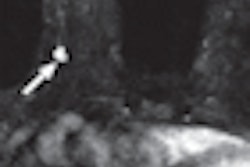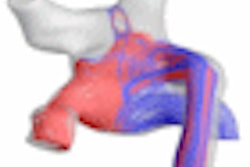Dear MRI Insider,
In this issue of the MRI Insider, we're featuring a study that found that MRI can detect a significant amount of proximal femur fractures that are missed by plain radiography. According to researchers from Chelsea and Westminster Hospital in London, the modality can also prompt early diagnosis and initiation of treatment.
Not discovering an occult fracture of the femoral neck may lead to displacement of the fracture and unnecessary surgery. However, early diagnosis of the fracture can lead to prompt treatment, a shorter hospital stay, and fewer complications from prolonged immobilization, according to the group.
Read more about the study, which appeared in the August issue of the British edition of the Journal of Bone and Joint Surgery, by clicking here.
Associate editor Kate Madden Yee is also filing two stories in this edition of the MRI Insider. The first report details how kinetic curves of malignant breast lesions are inconsistent across MRI systems and how it could potentially lead to clinical problems. The study, published in the American Journal of Roentgenology, comes from the University of Chicago, where researchers compared MRI kinetic curve data gathered by three systems.
The second article, from this month's American Healthcare Radiology Administrators (AHRA) meeting in Las Vegas, brings word that the rate of accidents in MRI suites has nearly tripled compared to just four years ago, highlighting the need for renewed attention to magnet safety as a means of protecting patients and avoiding legal liability.
In the report, Tobias Gilk, president and MR safety director at Mednovus of Leucadia, CA, offers information on how accidents have increased markedly in recent years, due primarily to innovations in the technology and MRI's use for new applications.
Also in this issue of the Insider, read about physicians at Children's Hospital of Philadelphia who are using a unique method for manipulating 3D cardiac MR images to compare how alternative approaches affect blood flow and expected outcomes. Pediatric cardiologists and surgeons at the hospital developed a tool for virtual surgery in collaboration with researchers from the Georgia Institute of Technology in Atlanta.
Until the next MRI Insider, make the MRI Digital Community your daily stop for late-breaking news and the latest research developments.


.fFmgij6Hin.png?auto=compress%2Cformat&fit=crop&h=100&q=70&w=100)





.fFmgij6Hin.png?auto=compress%2Cformat&fit=crop&h=167&q=70&w=250)











